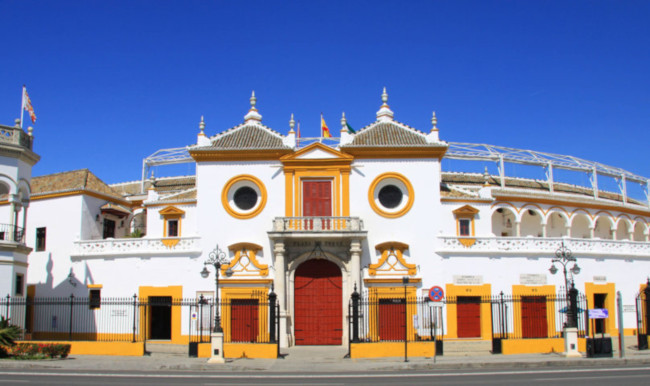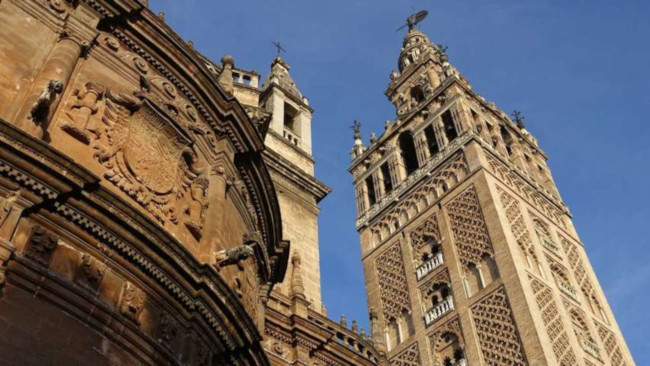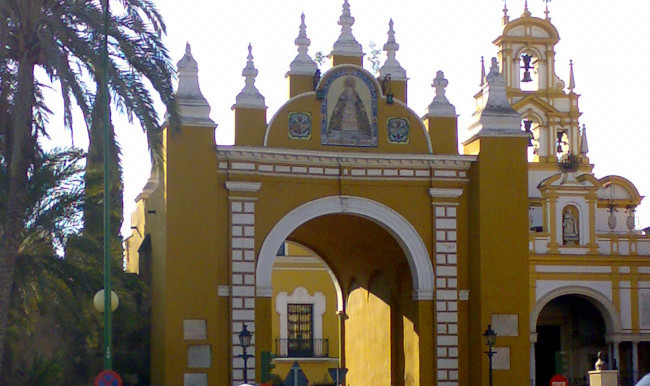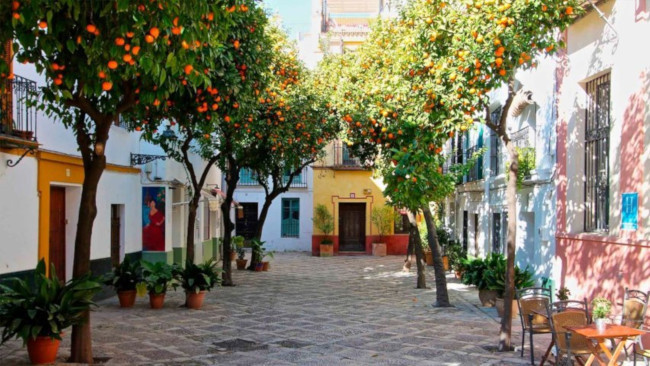Tourism in Seville
Rooms from 1 to 4 people
Save money by booking online
Seville Cathedral
“Let’s make a Church that those who see it built will consider us crazy”
This is how the people translated what the canons of Seville had decided in their meetings in 1401. They were giving birth, without fully knowing it, this wonder that we contemplate today and whose history is surprising. Seville Cathedral was built in 1402 on top of the old Great Mosque, of which only the modified minaret (the Giralda) and the Patio de las abluciones (Orange trees) are preserved. In 1987, UNESCO declared it a World Heritage Site.
During the seven centuries that this cathedral houses throughout its history, the Metropolitan Council has always been present, maintaining celebrations and festivities such as Corpus Christi and the Immaculate Conception, as well as attending to the devotion to the Virgen de los Reyes. During its construction it has gone through several stages or phases that one by one have been making valuable contributions to the whole that this impressive Cathedral represents.
In dimensions it is the third largest Christian temple in the world, after the Cathedrals of Saint Peter in Rome and Saint Paul in London. In addition, the Cathedral of Seville is the largest Gothic cathedral in the world. A fact that adds to the multitude of reasons why it is a must-see place for all audiences.
Seville, its monumental historic center is, without a doubt, the best possible choice for your vacation since you will be able to combine leisure with culture where the streets appear as a common thread and a necessary actor to understand the art and idiosyncrasy of our city.
Más información sobre este texto de origenPara obtener más información sobre la traducción, se necesita el texto de origen
Enviar comentarios
Paneles laterales


Plaza de España
Oval-shaped square of about 200 meters in diameter, in the Plaza de España in Seville, we can find a great “embrace” of the city. With a magnificent construction, an impressive tower at the end of each arm and in the center of the square we find a spectacular fountain.
Representative of regionalist architecture, it is made of exposed brick with polychrome ceramic applications.
The semicircular shape symbolizes the embrace of Spain and its former colonies and looks towards the Guadalquivir River as the path to follow towards America. Its decoration is mainly based on exposed bricks, marble and ceramics, giving it a Renaissance and Baroque touch in its towers.
The square is bordered by a canal crossed by 4 bridges that represent the 4 ancient kingdoms of Spain. The walls of the gigantic main building display a repertoire of benches and tile ornaments that refer to the 48 Spanish provinces with maps of the provinces, mosaics on historical facts, coats of arms of each city and on the sides columns with niches in which there were books about literature, history and art of each of them.
The Plaza de España in Seville was the most emblematic project of the Ibero-American Exposition of 1929. Construction work began in 1914, resulting in the most ambitious and costly project of the Exposition, with a thousand men working on its construction at the same time. weather.
La Maestranza bullring
The Plaza de Toros de la Real Maestranza de Caballería de Sevilla is the venue for the bullfights that take place in the city of Seville, with those held during the April Fair having special relevance for fans. It is one of the most popular tourist attractions in the city and is among the most visited monuments in the city.
It was built between 1761 and 1881. It has a baroque facade painted in bright white and golden ocher. The high stretches are covered by a roof supported by arches and marble columns, which give this square a unique personality.
The East Gate of the building is the so-called Puerta del Principe, through which only the most successful bullfighters are allowed to leave the Arena directly.
The Maestranza contains a bullfighting museum detailing the history of bullfighting in Seville. Among its collections of costumes, paintings, portraits and posters is a purple cape painted by Picasso. Next to it is the headquarters of the Real Maestranza de Caballería built by Aníbal González in 1929. This is the owner of the square. It is a noble corporation that has its origins in the times of the Reconquest and that was reorganized in the s. XVII.
The Plaza de Toros de la Maestranza in Seville is considered, together with Las Ventas in Madrid, one of the most important in Spain, being able to hold more than 12,500 spectators.


Giralda
One of the most characteristic monuments of the city of Seville is the Giralda, one of the largest in the world and a true jewel.
It is the old minaret of the Almohad mosque dating from the 12th century on which the current Cathedral of Seville would later be built. The lower part was originally built by the Muslims, beginning its construction in 1184 by order of the sultan of Morocco Abu Yaqub Yusuf. The foundations are built with stones from ancient Roman constructions and can still be seen today at ground level.
It was once the tallest tower in the world and one of the most beautiful in the Islamic world. With the conquest of the city by the Christian King Ferdinand III of Castile, the mosque became a Cathedral, partially destroyed by a strong earthquake in 1356. In 1433 the mosque was demolished and the Cathedral was built, which was inaugurated in the year 1507, in which La Giralda is still used as a bell tower.
Between 1558 and 1568 a new Renaissance bell tower was built, crowned by an enormous bronze weather vane, reaching the current height of 97.5 meters. La Giralda owes its name precisely to the rotating movements of the vane caused by the wind.
Más información sobre este texto de origenPara obtener más información sobre la traducción, se necesita el texto de origen
Enviar comentarios
Paneles laterales
Basilica of La Macarena
In neo-baroque style, colorful, the basilica began to be built in 1941 and was completed 8 years later, in 49, to become the headquarters of the Brotherhood of Nuestro Padre Jesús de la Sentencia and María Santísima de la Esperanza Macarena. In 2009, the basilica museum was also inaugurated, where visitors can take a tour of Holy Week in Seville through the processional and liturgical elements that the brotherhood has been gathering.
Also called the Minor Basilica of María Santísima de la Esperanza Macarena Coronada, it is located on Calle Bécquer, in the heart of the Macarena neighborhood.


Santa Cruz neighborhood
The Santa Cruz neighborhood is, without a doubt, one of the most popular and crowded in Seville, due to its typical and narrow streets, its stately homes, its patios full of flowers, the murmur of its fountains, the aroma of orange blossom, … and for all the charm and legends that surround it.
It originated in the old Sevillian Jewish quarter, when when King Fernando III conquered the city, the most important Jewish community in Spain was concentrated there. After the expulsion of the Jews in 1483, the neighborhood declined and it was in the 19th century that the decision was made to redevelop it so that it would be what it is today.
The neighborhood is made up of narrow streets and narrow alleys, which were intended to create currents of fresh air to withstand the heat in summer. These narrow streets lead to squares, such as the famous Plaza de los Venerables whose name originates from the old Hospital for Venerable Priests. Another of the most important squares in the neighborhood is the one that precisely gives the neighborhood its name: Plaza de Santa Cruz. This square has a cross in its center that dates back to the 17th century. However, these are not the only squares in the neighborhood, there are many of them and each one has its own charm, such as Plaza de las Cruces, Plaza de Doña Elvira, Plaza de los Refinadores, and Plaza de la Alianza, among others. others.
It is worth taking this walk calmly, getting lost in its streets and squares, and enjoying any corner, shade, aroma,…
Also called the Minor Basilica of María Santísima de la Esperanza Macarena Coronada, it is located on Calle Bécquer, in the heart of the Macarena neighborhood.
Más información sobre este texto de origenPara obtener más información sobre la traducción, se necesita el texto de origen
Enviar comentarios
Paneles laterales


